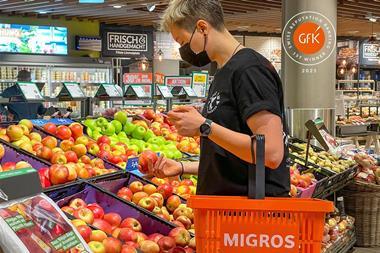Nearly two thirds of professional investors in Europe are already invested in social bonds or are planning to do so, according to a Goldman Sachs Asset Management (GSAM) survey of more than 700 institutional investors in Europe, including 166 pension funds.

Social bonds are a relatively new asset class, although a rapidly expanding one reaching €464bn by the end of 2022, according to GSAM. This means the market for social bonds is now almost comparable in size with the green bond market.
In social bonds, the variety of issuers still remains limited though. Existing issuers are almost exclusively (European) governments and financial institutions. By far the largest issuer is the European Commission.
Apart from banks, corporates are yet to issue social bonds. In that respect, the green bond market is more mature.
No social taxonomy for now
Earlier this year, European negotiators reached an agreement on an EU standard for green bonds, which is supposed to combat greenwashing.
No such label for social bonds is forthcoming as of yet, according to Martin Spolc, head of sustainable finance at the European Commission.
He said earlier this month at a conference of the Association for Financial Markets in Europe (AFME) in Amsterdam that the current Commission, whose mandate expires next year, will leave this to its successor.
Furthermore, it is not so easy to define what constitutes a social investment, said Bram Bos, head of green and social bonds at GSAM.
“It varies from country to country what can be considered a social investment. For example, what counts as social housing in one country is not in another,” he added.
Whereas proceeds from the issuance of green bonds are generally used to finance the energy transition, social bonds aim to achieve social goals, such as improving working conditions or reducing inequality.
One example is the so-called “COVID bond” the EU issued in 2020 to preserve jobs that were at risk as a result of the coronavirus crisis.
Three in 10 of the investors surveyed by GSAM said they already invested in social bonds, and another 36% said they were interested in doing so.
These percentages are “remarkably high”, according to GSAM portfolio manager Bram Bos.
“I had expected slightly fewer investors to be invested in this asset class already, because the market for social bonds is still relatively small with few investors having a separate allocation to the category, as is usually already the case with green bonds,” he said.
In the Netherlands, only a handful of (large) pension funds, including ABP, Bpf Bouw and PFZW, have separate allocations to social bonds. Other funds have integrated the investment category into existing green bond mandates, according to Bos.
He added: “We now have a number of mandates that include 5-10% of exposure to social bonds. We do not yet have any pure social bond mandates.”
GSAM has been running a dedicated social bond fund since 2022, in addition to its already existing green bond strategy. No pension funds yet invest in this fund, which currently has €75m under management.
Although interest in social bonds is high according to GSAM’s poll, investors are not willing to pay a premium for social debt securities.
On the contrary, more investors expect higher interest rates on social bonds than the other way around. In the past, investors were willing to pay a so-called “greenium” on green bonds, but this premium has shriveled in recent years.
This article appeared originally in Pensioen Pro, IPE’s Dutch sister publication.


















